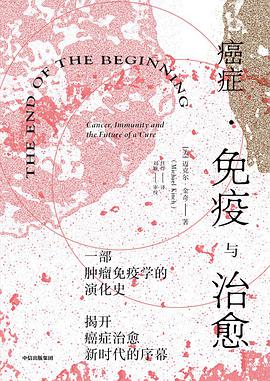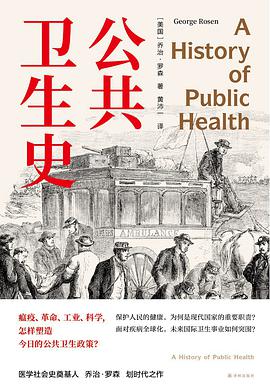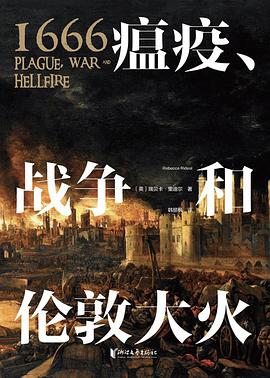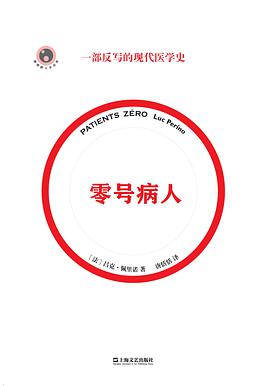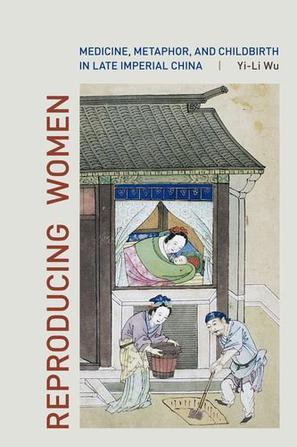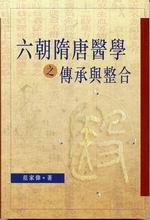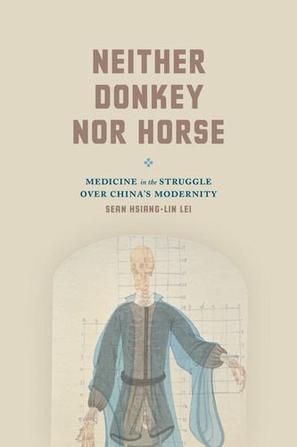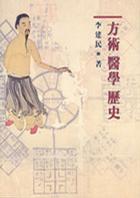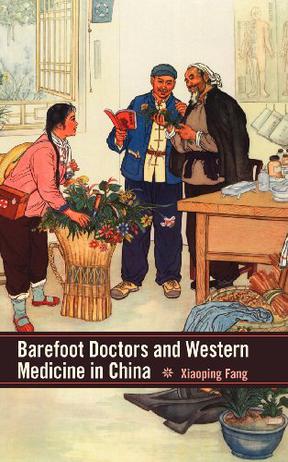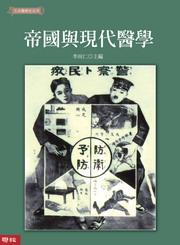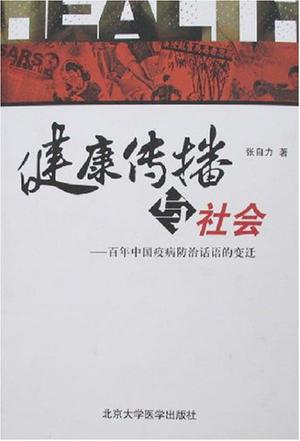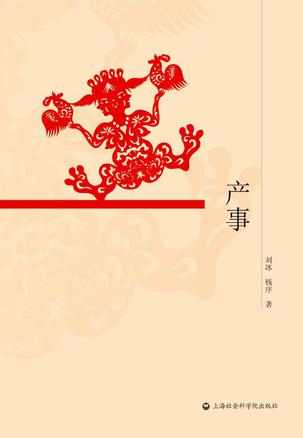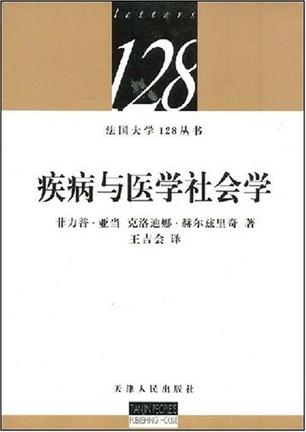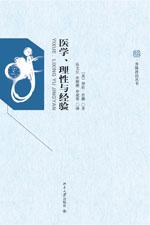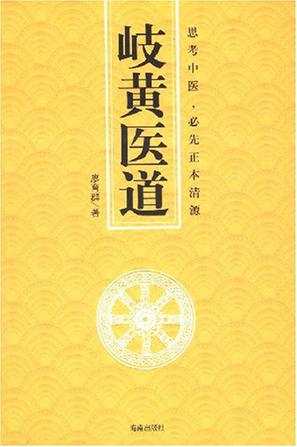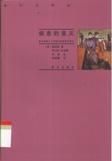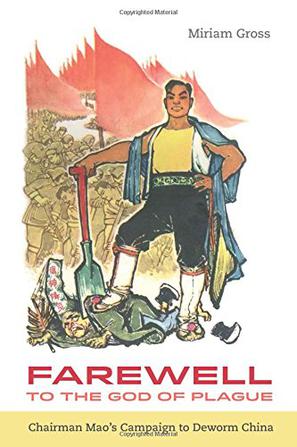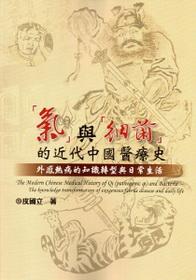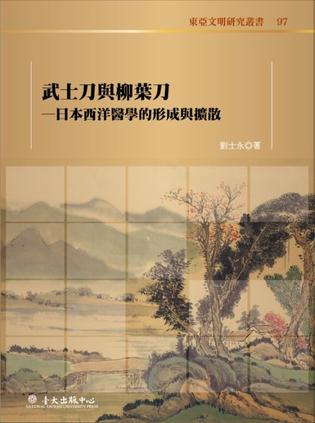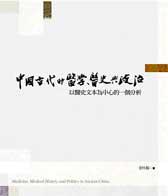标签:医疗史
-
癌症·免疫与治愈
如今,癌症与每个人近在咫尺。全世界罹患癌症的人数迅速增长,据世界卫生组织国际癌症研究机构(IARC)估计,仅2018年新增1810万癌症病例——其中有48%在亚洲,死亡人数高达960万。这样下去,到本世纪末癌症将成为全球头号“杀手”,因此有人将肿瘤视为“众病之王”。
一直以来,在癌症和人类之间,有一场艰难的、代价惨重的战争。传统癌症治疗方法主要有三种:手术、放疗和化疗。这些“切割、燃烧和毒杀”癌细胞的技术,不但有强烈的副作用,而且只能够治愈一部分癌症患者,而剩下的另一半癌症患者急需更好的治疗方法。
与化疗等损伤性旧疗法不同,主动免疫的应用和被动免疫(预示了一种新的、经过改进的武器的诞生,它将在抗击癌症的战争中充分释放巨大的潜能。这种前景光明的新疗法就是2018年斩获诺贝尔生理学或医学奖的免疫疗法。它是一种全新的治疗思路,借助免疫系统的力量来对抗癌细胞。
这本书是一部免疫肿瘤学的演化史,主要讲述了免疫疗法在治疗癌症方面取得的非凡成功——尤其是在过去的四分之一个世纪里,包括人类对癌症的理解如何演变,以及肿瘤与免疫系统的动态相互作用如何得到越来越深刻的认识。在这段鼓舞人心的历程中,我们将会见到各种用来瞄准难以捉摸的肿瘤细胞的药物和治疗方法,看到突破性科学进展的积累如何迅速转化为拯救生命的技术应用,这些技术已开始极大地提升癌症患者的生命质量和数量。我们也会看到无数科学家、药物研发人员和癌症患者及其家属做出了怎样可歌可泣的贡献和牺牲,有着多么动人心弦的故事。作者还在书中穿插了自己的科研和人生故事,作为这段癌症免疫疗法发展史的有力佐证。
免疫疗法改变了患有转移性黑色素瘤等疾病的患者的预后,在过去的十年里,这种疾病的治疗方法发生了根本性变化,一部分患者已经被治愈,更多的人会很高兴地同意这种预后方案。这种光明的前景属于IO(Immuno-Oncology,免疫肿瘤学)。展望未来,正如1942年11月10日丘吉尔发表的题为"The End of the Beginning"的演讲中所说那样:“这不是结束,甚至这也并非结束的序幕已然到来,但或许,这是序幕已经结束!”也就是说,免疫疗法有望成为癌症的终结者,结束艰难对抗癌症的时代。
-
公共卫生史
【图书简介】
“疾病是一种社会现象,医学是一种社会事业。”
·
一部迟到已久的经典防疫史
重现人类卫生事业的奋进之路
·
卫生学泰斗 乔治·罗森 划时代之作
首度中文译介
·
从流行病学的古老源头,到职业健康、母婴保健、营养学的兴起,从人口统计的诞生,到第一次国民健康调查、第一套地方卫生行政体系、第一个国际卫生组织的破土,卫生学泰斗、医学社会史先驱乔治•罗森细数公共卫生史上的重大里程碑,展现政治、经济、科学、思想背景下的卫生大历史,讲述一个关于挫折与前进、迷茫与奋战的故事。《公共卫生史》联结过去与现在,试图从历史中找到公共卫生获得进步的必要条件,以此指明未来的方向。
·
※ 编辑推荐 ※
·
⭕⭕ 至今无法取代的里程碑之作,理解现代公共卫生的必读书目
自问世以来重版不断,定义了公共卫生的内容和边界,已成为公共卫生学的标准教科书,永不过时的医学经典。
·
⭕⭕ 享誉全球的卫生学泰斗,填补空白的心血巨著
乔治·罗森是社会医学史的缔造者,是美国医学教育事业的开拓人,也是纽约市公共卫生官员、哥伦比亚大学和耶鲁大学公共卫生学教授、前国际医学史学会主席,更有以他命名的医学史奖项“乔治·罗森奖”。《公共卫生史》是他的力作之一,纵横千年,全面呈现国际防疫的演进历程。
·
⭕⭕ 宏阔、丰富、易读,适合入门,也适合深研
从古希腊罗马时代的卫生观,到中世纪的瘟疫与隔离,再到现代的卫生改革运动,《公共卫生史》跨越千年、细密广阔、通俗易懂,展现了公共卫生的历史、曲折与进步,更瞭望了未来。
·
⭕⭕ 最新修订版,补全当代全球卫生发展图景
新版增加美国著名医学史家伊丽莎白•菲等人撰写的长篇序言,介绍并反思了公共卫生与防疫在全球化时代的新变化,同时补充罗列了近50年间最为重要的公共卫生史著作,大大拓宽视野。
·
※ 媒体评价 ※
·
⭕⭕ 《公共卫生史》填补了一个绝对的真空,在公共卫生史上没有任何一本书可以同时做到如此全面、如此通俗易懂、如此内容详实。——伊丽莎白·菲(美国医学史家、科学史家,前美国国立医学图书馆医学史部主任)
·
⭕⭕ 乔治·罗森对公共卫生悠久而迷人的历史进行了全面的描述,这得益于他作为一名历史学家所具备的专业技能以及作为一名公共卫生从业人员的实际经验。……这本《公共卫生史》具有不朽的价值。——帕斯卡·因佩拉托(美国公共卫生学家,前纽约州立大学公共卫生学院院长)
·
⭕⭕ 这是一部经典之作。——《新英格兰医学杂志》
-
1666:瘟疫、战争和伦敦大火
1666为什么是英国历史的分水岭?
三百多年前,英格兰如何走出黑暗与绝望?
回顾现代伦敦的起点,再现英国历史的重大转折
★亚马逊推荐“年度历史读物”、4.5星高分好评
★《卫报》《泰晤士报》《出版人周刊》《BBC历史杂志》——赞誉推荐
★英国权威伦敦历史研究者瑞贝卡·里迪尔重磅力作
★惊心动魄的灾难纪实,人类历史的悲情共鸣
【内容简介】
1666年是英国历史的分水岭。瘟疫暴发、第二次对荷战争宣告失败,一场严重的火灾侵袭了伦敦,接二连三地对这个国家造成了毁灭性的影响。
历史学家瑞贝卡·里迪尔聚焦这些历史上的重大事件以及它们所发生的背景,通过对那些鲜为人知的原始档案的研究,透过一个个非凡历史人物的视角,穿过了那场空前的恐怖与转折时期的历史迷雾,为解读1666年英国历史提供了新的视角。
虽然这重要一年的中心事件是破坏和失败,但1666年也让人们看到了当时令人难以置信的科学和艺术方面的进步。正是在这一年,牛顿发现了万有引力,《伦敦公报》的创办,约翰·弥尔顿完成了《失乐园》,一位名叫克里斯托弗·雷恩的年轻建筑师提出了一个新伦敦的卓越构想——一只从旧城的焦土中升起的“石凤凰”。
《1666》以其独特的风格,向读者展示了一个站在通往现代化的十字路口的城市和国家如何完成了历史上伟大的重构与转折。
-
零号病人:一部反写的现代医学史
★ 2021年法国“科学读书节”科普读物大奖作品
★ 颠倒角色安排,病人取代医者成为主角
★ 25个“零号病人”,25个短篇小说一般精彩的故事
★ 反思医学与健康产业的功过是非,开启对未来行医的思考
是因为有人觉得自己生病才诞生了医学,而不是因为有了医生,人们才知道自己生病。
——乔治•冈吉莱姆,法国思想家,认识论与科学哲学家
历史颂扬医者战胜疾病取得胜利,却忽视了患者。然而,是患者的障碍、病痛开创了新的诊断和疗法,动摇了旧的医学理论,提供了新的治疗视角,纠正了医者的错误或拷问他们的成见。他们有的奇迹般病愈,有的充当了实验品和殉难者,有时还不幸沦为医者高傲或贪婪的牺牲品。
以小说笔法写就,“零号病人”们的故事是对他们的纪念。颠倒了通常的角色安排,小人物和无名氏取代了名流和英雄,勾勒出另一个版本的医学史。
♦ 这本书将零号病人从遗忘中拯救出来。——法国《观点》周刊
♦ 一如“新”历史学家从小人物、日常琐事的视角研究社会与文化事件,吕克•佩里诺从病人而非医学权威的视角审视医学既有进步也有误区的历史,结果令人瞠目:从外科学到精神病学再到药理学,一部截然不同的医学史浮出水面。——法国《解放报》
♦ 如果你对医学史感兴趣,那就一定要读这本书。风格平易,阅读流畅,精彩至极!——法国亚马逊网友
♦ 对制药产业、医疗生意的反思,对医患关系的捍卫。——法国亚马逊网友
♦ 营养丰富,对医学知识的介绍深入浅出,一点也不枯燥,时时令人莞尔。热烈推荐。——法国亚马逊网友
-
Reproducing Women
This innovative book uses the lens of cultural history to examine the development of medicine in Qing dynasty China. Focusing on the specialty of “medicine for women”(fuke), Yi-Li Wu explores the material and ideological issues associated with childbearing in the late imperial period. She draws on a rich array of medical writings that circulated in seventeenth- to nineteenth-century China to analyze the points of convergence and contention that shaped people's views of women's reproductive diseases. These points of contention touched on fundamental issues: How different were women's bodies from men's? What drugs were best for promoting conception and preventing miscarriage? Was childbirth inherently dangerous? And who was best qualified to judge? Wu shows that late imperial medicine approached these questions with a new, positive perspective. -
六朝隋唐醫學之傳承與整合
中國醫學雖然經歷了兩千多年的發展,但是由於有大量的醫經保存下來,使到民間的驗方、針灸的圖譜及診脈的技術,得以傳承不衰。六朝至隋唐是中國醫學發展史上一個非常重要的時期,原因是這個時期上承漢末之動亂紛爭,下啟盛唐之統一興盛,醫學也因此得到了豐盛的發展、創造與整合。 本書追溯中古時代醫學之發展,並從醫經整合、治療方法入手,說明醫學知識在六朝過渡至隋唐所經歷的傳承與整合。此外,本書對醫學傳承方式、疫病觀念及疾病對社會生活的影響,做了深入的研究。本書作者徵引了大量的文獻,理論紮實,論據充足,對於研讀中國醫學史及社會史的讀者,具有重要的參考價值。 -
Neither Donkey nor Horse
Neither Donkey nor Horse tells the story of how Chinese medicine was transformed from the antithesis of modernity in the early twentieth century into a potent symbol of and vehicle for China’s exploration of its own modernity half a century later. Instead of viewing this transition as derivative of the political history of modern China, Sean Hsiang-lin Lei argues that China’s medical history had a life of its own, one that at times directly influenced the ideological struggle over the meaning of China’s modernity and the Chinese state. Far from being a remnant of China’s premodern past, Chinese medicine in the twentieth century coevolved with Western medicine and the Nationalist state, undergoing a profound transformation—institutionally, epistemologically, and materially—that resulted in the creation of a modern Chinese medicine. This new medicine was derided as “neither donkey nor horse” because it necessarily betrayed both of the parental traditions and therefore was doomed to fail. Yet this hybrid medicine survived, through self-innovation and negotiation, thus challenging the conception of modernity that rejected the possibility of productive crossbreeding between the modern and the traditional. By exploring the production of modern Chinese medicine and China’s modernity in tandem, Lei offers both a political history of medicine and a medical history of the Chinese state. Review “In this insightful and provocative book, Lei shows us what it meant to practice ‘modern’ medicine in Mao Zedong’s semicolonial and semifeudal society. Drawing on rich historical sources, Neither Donkey nor Horse reveals that modern medicine will always be mongrel medicine. Importantly, Lei gives us the critical postcolonial genealogy for ‘Traditional Chinese Medicine,’ the epitome of Chinese modernity, now a global phenomenon.” (Warwick Anderson, University of Sydney) “Reaching far beyond the history of modern China, Neither Donkey nor Horse challenges conventional understanding of modernity, science, and state power through an intellectual and social history of medical debate and development in East Asia from the late nineteenth century forward. This is a thoughtful and meticulously researched investigation of transnational modernizing processes in the twentieth century as they touched down and transformed worlds in China. The book demonstrates that medical knowledge and practice, whether ‘modern’ or ‘traditional,’ historicized or fixed as policy, are nowhere innocent of politics, culture, and social hierarchy. It offers surprising historical lessons for everyone interested in science and local knowledge, socialism and capitalism, institutions and ideas about nature as they weave together in modern regimes of health and population governance.” (Judith Farquhar, University of Chicago) “Neither Donkey nor Horse is a tour de force of how both Western and Chinese medicine played central roles not only in Chinese modernity but also the formation of the state in Republican China. Lei thus adroitly relates the politics of medicine and debates over making Chinese medicine more scientific to the big themes of nationalism, the state, and modernity that dominated the political struggles of early twentieth-century China.” (Marta Hanson, Johns Hopkins University) “Neither Donkey nor Horse is a major work by the leading scholar in the field of modern Chinese medical history. Lei argues that what we now know as traditional Chinese medicine as it emerged as a discourse in the early twentieth century was fundamentally shaped by the encounter with Western medicine and the relationship with the state that this dictated. Chinese medicine was something new that was created during this period in response to themes with Western biomedicine as traditional practitioners sought social mobility through participation in the state. Lei’s argument is backed up by research of the highest standard: his knowledge of the historical sources is outstanding, and he is impressively familiar with the secondary and theoretical literature in both English and Chinese. His book will be of interest not only to historians of Republican China but also to those interested in the history of science more widely.” (Henrietta Harrison, University of Oxford) “If you are going to read just one book on the modern history of Chinese medicine, this is the work to read. Lei’s analysis of the entwinement of medicine, science, modernity, and the state is brilliantly original and persuasive, and argued with admirable clarity. Neither Donkey nor Horse is a major contribution to science studies and the history of global health, as well as to the study of twentieth-century China.” (Shigehisa Kuriyama, Harvard University) -
方術醫學歷史
本書的主軸在「中國史」,這本書所收的15篇論文,編者期待由台灣史學界十幾年間從事醫療、養生、疾病、衛生等史學新領域,重新反思中國歷史發展核心的政治、社會、文化變遷等等。 醫療介入歷史中的生老病死,涉入不同時代與地域的生活態度與對健康的追求,包含人們對宇宙的想像及其政治的意涵,同時也呈現過去的醫生團體與其他團體之間的關係,展現中國歷史多層次的獨特風貌。我們相信,深入這個新領域,將重寫中國史研究的預設與真相。 《從醫療看中國史》的研究成果,旨在尋找歷史新議題、連接醫學史與一般史,同時瓦解既存的社會史、文化史等分類框架,以及打破史學研究的實證心態,這正是台灣的醫療史研究發展之新趨勢。關心醫療史與台灣史學發展的讀者,宜人手一。 -
Barefoot Doctors and Western Medicine in China
In 1968, at the height of the Cultural Revolution, the Chinese Communist Party endorsed a radical new system of healthcare delivery for the rural masses. Soon every village had at least one barefoot doctor to provide basic medical care, which integrated the villages into a regional network of healthcare services for the very first time. The barefoot doctors were portrayed nationally and internationally as revolutionary heroes, wading undaunted through rice-paddies to bring effective, low-cost care to poor peasants. This book is the first comprehensive study to reach beyond the nostalgic view of barefoot doctors that dominates present scholarship on public health in China. Author Xiaoping Fang provides evidence drawn from local archives during the Cultural Revolution and personal interviews with patients and doctors, contextualizing it within the broader history of medicine in revolutionary and post-reform China. His data demonstrates that the key impact of the barefoot doctor program was its introduction of modern Western medicine into villages that were hitherto dominated by traditional Chinese medicine. Although traditional methods were marginalized by the innovations and improved outcomes Western medicine brought, Chinese medicine continued to exist as an alternative approach. This book ultimately offers a powerful and carefully contextualized critique of conventional views on the role of barefoot doctors, their legacy, and their impact, both in rural areas and in China as a whole, while making theoretical contributions to the Chinese social historiography of medicine. -
帝國與現代醫學
醫學在近代帝國的擴張活動中扮演重要的角色,也是建構殖民現代性與塑造被殖民者身分認同的關鍵力量。研究東亞的現代醫學史,必然會觸及到殖民與後殖民研究的課題。要理解現代醫學擴張的歷史,國家疆界與國族主義的分類範疇並無法提供適切的分析架構。本書企圖超克國族主義史學的局限,透過跨帝國的研究視野和新的史學想像,來探討帝國與現代醫學之間千絲萬縷的複雜關係。 -
健康传播与社会
《健康传播与社会:百年中国疫病防治话语的变迁》以近代以来中国历史上发生的若干次重大的疫病流行事件为样本,通过与近代中国社会和历史的发展轨迹相结合、以话语分析方法为手段,对清末民初1894年的粤港鼠疫、1910年的东北鼠疫;民国时期20世纪20年代的上海霍乱、30年代的新生活运动;以及新中国成立之后50年代初的反对美帝国主义细菌战、爱国卫生运动、1988年的上海甲肝以及2003年的“非典”事件等,进行了不同于以往公共卫生视角的全新解读。 -
产事
本书主要描述农村地区生育状态和相关的习俗文化。本书作者深入乡村基层,通过口述访谈,记录了民间的分娩实践、产妇的感受和基层保健工作者的心声。本书主要采访了不同的当事者,包括普通老百姓、传统接生员和产科医生,并查阅了各种有关资料,较为翔实地记录了与分娩相关的故事和人物。通过本书记述的历史,以及新时代的变化,可以从中管窥我国妇幼工作近百年来的历程,并进一步加深了解我国促进母婴安全方面的努力和成绩。希望有更多的人对遥远的过去、并不遥远的往事和正在改变的现实,多一点了解和兴趣。 -
疾病与医学社会学
今天医学知识和实践让每个人都会碰到疾病问题:对找医生看病,身体检查和疾病治疗等具体事情我们都已习以为常,诊断结果成为患者自我调整与适应疾病造成的破坏的主要依据,作为生物体的人也因为受到的照顾而改变了社会意义。 《疾病与医学社会学》尝试从宏观上勾勒了促成现代医学以及今天患者地位形成的社会变革,展示了社会对个体健康状况极具社会诠释与实践的影响。书中的重点不是健康问题,而是疾病问题,更确切地说是身体疾病,即影响人体的疾病。现行健康体制下流行病往往卷土重来,公共场所疾病也不时出现。《疾病与医学社会学》可以使我们了解该体制下的一些关键问题,因而颇具现实意义。 另外从理论意义上,两位作者通过多学科的尝试,为研究与疾病有关的社会进程确立了理论,并促进了疾病社会学与医学社会学的完善,使我们对这一领域的研究有了一个更为基础的了解与思考。 -
医学、理性与经验
本书在对以生物医学为典型代表的实证主义与经验主义疾病观的批驳中,在对数种医学人类学研究取向的斟酌中,作者倡导一种与批判理论保持紧密关系的解释或曰意义中心取向,并尤其说明了将病患作为嵌于地方道德世界、政治关系、时间之流等等中的“审美对象”予以解读的理论潜力。 -
岐黄医道
《岐黄医道》主要内容:对于执中国传统医学为业者,或研究这门学问的人来说,“历史的知识”确实显得非常之重要。如此说,至少有两方面的意义:首先,由于当代使用的中医治疗方法与理论体系,是自古以来一脉相承延续不断的,未见有不治古典的而能言中医者;其次,在更深层次上讲,如果没有对于我国古代文化的较多了解,则无论如何不可能看清中国传统医学之体系是怎样逐渐发展而成的。这也就是说,如果不把中国传统医学置于从古至今社会发展的总体背景之中加以考察,则无法真正学懂中医,最多只能成为一个疗效较好的治疗家,或是只知背诵经典的所谓“理论家”。因而学习中国医学史的目的,并不仅限于了解从古至今、历朝各代有些什么经典著作、杰出人物,而更为重要的是弄清其发展过程与演变源流,如此方能步入知其然,亦知其所以然的境地。 -
Farewell to the God of Plague
Farewell to the God of Plague reassesses the celebrated Maoist health care model through the lens of Mao’s famous campaign against snail fever. Using newly available archives, Miriam Gross documents how economic, political, and cultural realities led to grassroots resistance. Nonetheless, the campaign triumphed, but not because of its touted mass-prevention campaign. Instead, success came from its unacknowledged treatment arm, carried out jointly by banished urban doctors and rural educated youth. More broadly, the book reconsiders the relationship between science and political control during the ostensibly antiscientific Maoist era, discovering the important role of “grassroots science” in regime legitimation and Party control in rural areas. -
氣與細菌的近代中國醫療史
一般人得了SARS、流行性感冒或法定傳染病,您敢去看中醫嗎?那些兇狠、來無影去無蹤的細菌、病毒,中醫們有辦法處理嗎?這不免讓人感到懷疑:也許中醫可以處理頭疼腦熱,但中藥可以殺死細菌嗎?也許,讀過這本書後,對上面這些問題,您會有全新的思考與不同於過往的見解。 從醫學史出發,本書帶領您穿梭時空,進入距今將近百年前的中國社會,重現一段中醫抗菌的奮鬥史。在中西醫衝突、論戰的民國時期,中醫是如何回應西方細菌學的衝擊?他們在西醫的科學實驗和一步步佔據國家衛生主權的過程中,怎麼運用自身的外感熱病知識體系,來構築一套中醫式的傳染病學,並且在日常生活中找到中醫藥可以發揮的空間。 作者不盲從西方理論,從傳統文化中構思,創造從「重層醫史」的視角出發的新研究。先鋪陳出中西醫論爭的時代氛圍,並細心地關照了近代中醫在古典文獻、日常生活養生抗病、醫者志業和中西疾病觀的對話等各方面的史實,展現了全面的視角。受現代醫學影響,傳統中醫雖仍為民眾信任,但其實有很多論述與臨床技術其實是處在一種「準失傳」的狀態,多數中醫不去重視,民眾也不知道傳統中醫有何更強的能耐,更別奢望國家科研資源的大量挹注,這一切遂使傳統醫學的理論、生生之技的運用範圍,愈形窄化、順時流失,這是非常可惜的事情。 歷史學研究不能與現實生活脫節,作者透過醫史的研究,希望能喚醒中醫們對自身體系的認識與自信,並期待更多民眾與知識分子(包括現代西醫與科學家)瞭解中醫文化之價值,走出百年來「廢中醫」的陰影,揚棄刻板的印象,也為自己的實際治療與日常養生,提供另外一種思考的可能性。 英文書介: The Modern Chinese Medical History of Qi (pathogenic qi) and Bacteria-The knowledge transformation of exogenous febrile disease and daily life Does anyone infected with SARS, influenza or statutory infectious diseases dare to attend the clinic of Traditional Chinese Medicine (TCM)? Can Chinese medicine practitioners deal with those vicious and invisible bacteria and viruses? It is doubtful whether TCM can kill bacteria or viruses. Perhaps this book can provide you with a brand new direction of thinking which is different from the previous perspectives for the aforementioned questions. Based on the history of medicine, this book guides readers to explore and review the history of TCM’s fight against bacteria in Chinese society approximately a hundred years ago. In the era of Republic of China when the controversy between western medicine and TCM was intense, how could TCM respond to the impact of western bacteriology and use its own knowledge system of heat diseases to develop a TCM-based concept of infectious disease? The author intends to awaken Chinese medicine practitioners’ knowledge and confidence in their own systems by studying the history of medicine. Moreover, the author also hopes that more people and intellectuals (including modern western medicine practitioners and scientists) can understand the value of TCM, free themselves from the shadow of “useless TCM” for centuries, get rid of stereotypes and seek for a method to integrate various concepts, in order to provide themselves with another feasible technique and thinking in the aspects of disease treatment and daily health care. -
武士刀与柳叶刀
西洋医学传入东亚社会的历史过程向为学界所注目,有鉴于日本为东亚地区医学西化的先声,故本书勾勒了西洋医学在日本之递嬗,及其尔后之形变与扩张。全书的结构依时叙事且援事为纲,共计六章,分别为:第一章「溯源与流变」;第二章「交锋与转化」;第三章「名门与正宗」;第四章「瑜亮之争」;第五章「流转与离乡」;第六章「弦尽音未竟」。全书略论日本西洋医学之文化特质与医学争议,点明日本西洋医界之文化及社会传承,侧写与殖民地西洋医学发展之关系。作者盼望以此书呈现幕末侍医门风在明治医学现代化中的演化,并展现日本现代医学发展中的文化与传统特质。 -
中國古代的醫學、醫史與政治
本書從中國古代醫學論述、醫制政典和醫史事語等資料的形成脈絡出發,分析其體裁、編次、敘事、論斷、寓意,及論述動向,藉以探討晚周秦漢醫學論述、醫史建構與政治變遷間的可能關係,說明促成中國古代醫學變遷的可能動力。
热门标签
下载排行榜
- 1 梦的解析:最佳译本
- 2 李鸿章全传
- 3 淡定的智慧
- 4 心理操控术
- 5 哈佛口才课
- 6 俗世奇人
- 7 日瓦戈医生
- 8 笑死你的逻辑学
- 9 历史老师没教过的历史
- 10 1分钟和陌生人成为朋友

